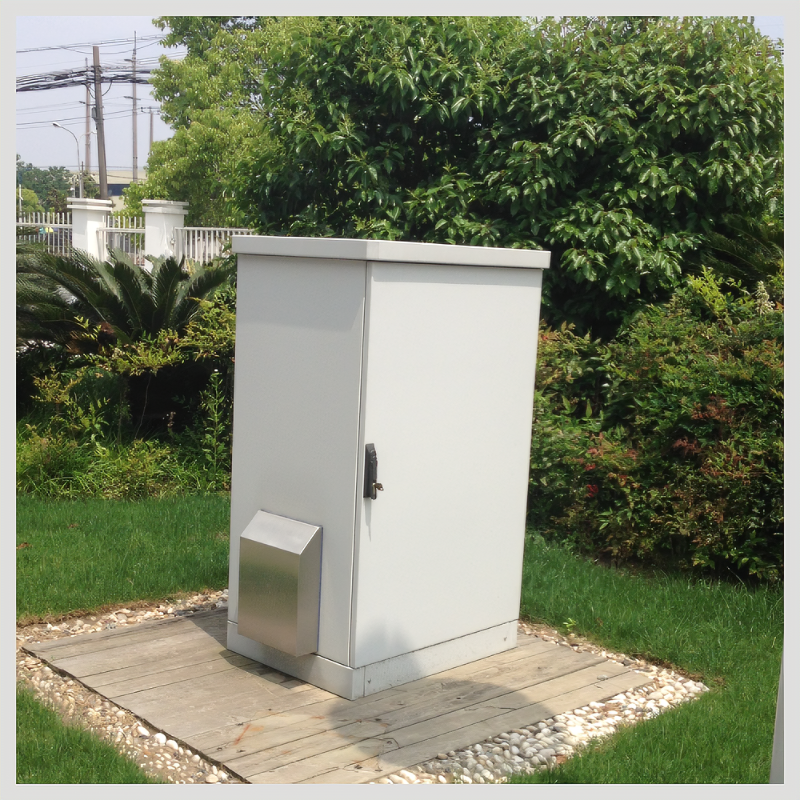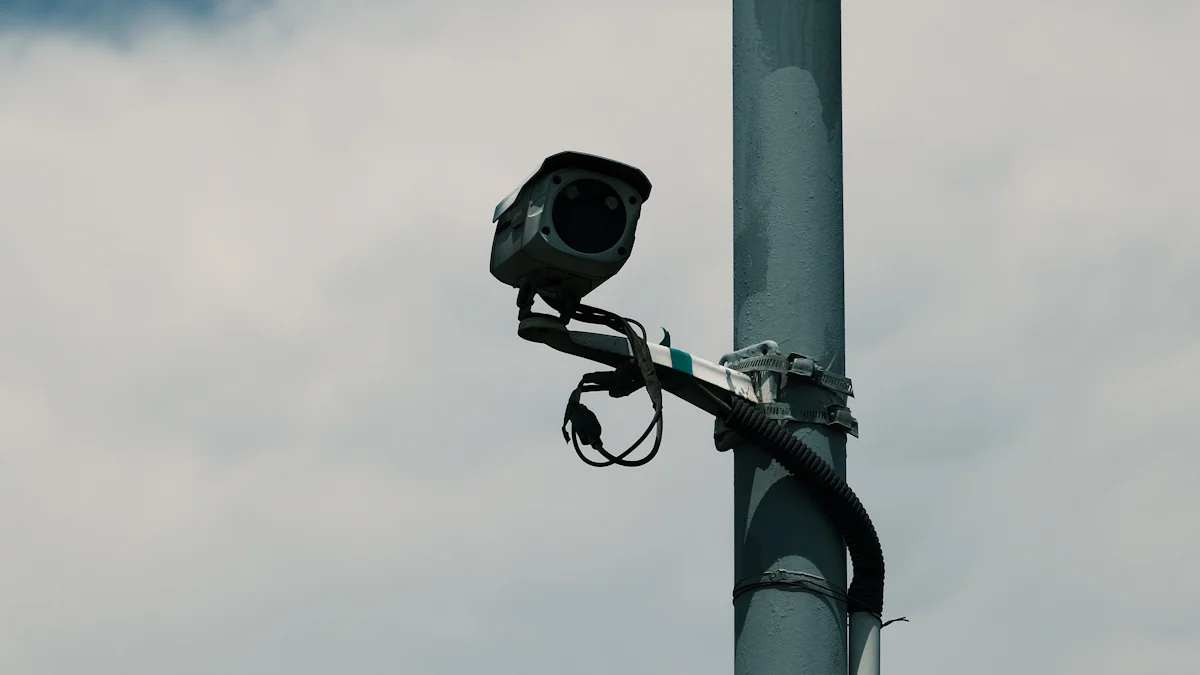Key Strategies to Boost Communication Cabinet Anti-Theft Functions

Communication cabinets play a vital role in protecting telecommunications infrastructure. These cabinets house sensitive equipment that keeps networks running smoothly. However, theft and unauthorized access pose significant threats to their functionality. You must take proactive steps to ensure enhanced security for these critical assets. By implementing advanced anti-theft measures, you can safeguard your equipment and maintain uninterrupted service. Wondering "通信机柜怎么加强防盗功能"? Start by understanding the risks and adopting modern solutions to counter them effectively.
Key Takeaways
Use advanced locks. Smart locks with fingerprints improve safety and track users.
Add security cameras. Motion cameras and remote apps catch break-ins quickly.
Pick strong cabinet designs. Use tough materials and hidden hinges to stop thieves.
Check security often. Inspect to find weak spots and test locks and alarms.
Teach staff safety rules. Train workers to avoid mistakes and insider problems.
Common Anti-Theft Challenges for Communication Cabinets
Physical Vulnerabilities
Outdated or easily bypassed locking mechanisms
Old locking systems often fail to provide adequate protection. Thieves can easily pick or break these locks, leaving your communication cabinets exposed. Relying on outdated locks increases the risk of theft and compromises the safety of your equipment. Upgrading to modern, tamper-resistant locks is essential to address this issue.
Poor placement in high-risk or remote areas
Cabinets located in isolated or high-crime areas face greater risks. Remote locations make it harder to monitor activity, giving thieves more time to tamper with the cabinets. Placing cabinets in well-lit, secure areas with regular foot traffic can reduce these risks significantly.
Technological Limitations
Lack of integration with modern security technologies
Many cabinets lack advanced security features like smart locks or IoT-enabled sensors. Without these technologies, you cannot monitor or control access effectively. Modernizing your cabinets with integrated security systems can help you detect and prevent unauthorized access.
Insufficient monitoring or alert systems
Without proper monitoring, you may not know when a cabinet is being tampered with. This delay in response can lead to significant losses. Installing motion-activated cameras and real-time alert systems ensures you stay informed about any suspicious activity.
Environmental and Human Factors
Exposure to vandalism in unmonitored locations
Unmonitored cabinets are easy targets for vandalism. Graffiti, physical damage, or theft can occur when cabinets are left unprotected. Adding surveillance cameras and anti-theft measures can deter vandals and protect your equipment.
Risks from insider threats or human negligence
Employees or contractors with access to cabinets can pose risks if they act carelessly or maliciously. Negligence, such as leaving cabinets unlocked, can lead to theft. Training your staff on security protocols and implementing strict access controls can minimize these risks.
Key Strategies to Enhance Communication Cabinet Anti-Theft Features

Advanced Locking Mechanisms
Smart locks with biometric or keypad access for enhanced security
Upgrading to smart locks can significantly improve the security of your telecom cabinets. These locks use advanced technologies like biometric fingerprint scanning or keypad access. Only authorized personnel can unlock the cabinet, reducing the risk of theft. You can also track access logs to monitor who interacts with the cabinet. This feature helps you answer the question, "通信机柜怎么加强防盗功能?" effectively.
Reinforced physical locks resistant to tampering or forced entry
Physical locks remain a critical component of any anti-theft system. Reinforced locks made from durable materials resist tampering and forced entry. These locks act as an immobilizer, making it harder for thieves to break in. Combining smart locks with reinforced physical locks creates a robust security solution.
Surveillance and Monitoring Systems
Motion-activated cameras for real-time monitoring
Installing motion-activated cameras near your telecom cabinets enhances security. These cameras start recording when they detect movement, capturing any suspicious activity. You can review footage to identify potential threats. This proactive approach answers the concern, "通信机柜怎么加强防盗功能?" by providing real-time monitoring.
Remote monitoring software to provide instant alerts
Remote monitoring software allows you to oversee your cabinets from anywhere. When the system detects unauthorized access, it sends instant alerts to your device. This feature ensures you can respond quickly to potential threats. Pairing this software with motion-activated cameras creates a comprehensive anti-theft strategy.
Tamper-Proof Cabinet Designs
Cabinets made with reinforced steel or anti-drill materials
Choosing cabinets made from reinforced steel or anti-drill materials adds another layer of protection. These materials make it difficult for thieves to damage or penetrate the cabinet. Such designs are ideal for outdoor telecom cabinets exposed to high-risk environments.
Hidden hinges and secure mounting systems to deter tampering
Hidden hinges prevent thieves from easily removing cabinet doors. Secure mounting systems anchor the cabinet firmly, acting as an immobilizer against theft attempts. These features ensure your cabinets remain safe, even in remote locations. If you're wondering, "通信机柜怎么加强防盗功能?", tamper-proof designs are a reliable solution.
Tip: Combining advanced locks, surveillance systems, and tamper-proof designs creates a multi-layered defense for your telecom cabinets.
Integration of Smart Technologies
GPS tracking for mobile or relocatable cabinets
GPS tracking offers a reliable way to monitor mobile or relocatable telecom cabinets. By equipping your cabinets with GPS devices, you can track their location in real time. This feature acts as an immobilizer, making it harder for thieves to move or steal the cabinets without detection. You can also set up geofencing alerts to notify you if a cabinet leaves a designated area. This proactive approach ensures you always know where your equipment is, even in high-risk environments.
IoT-enabled sensors to detect unauthorized access or tampering
IoT-enabled sensors enhance the security of your telecom cabinets by providing instant alerts for unauthorized access or tampering. These sensors detect changes in the cabinet's environment, such as vibrations or forced entry attempts. When triggered, they send notifications to your monitoring system, allowing you to respond quickly. Integrating these sensors with anti-theft systems creates a comprehensive defense strategy. This technology not only protects your equipment but also helps you maintain uninterrupted service.
Additional Measures
Anti-theft cabling and magnetic key cards for added security
Anti-theft cabling secures your equipment by anchoring it to the cabinet, acting as an additional immobilizer. This measure makes it difficult for thieves to remove or damage the equipment. Magnetic key cards provide another layer of security by restricting access to authorized personnel. These cards are easy to use and can be programmed to track access logs, giving you better control over who interacts with your cabinets.
Multi-factor authentication for access control
Multi-factor authentication strengthens access control by requiring multiple forms of verification. For example, you can combine a magnetic key card with a biometric scan or a PIN code. This approach ensures that only authorized individuals can access your telecom cabinets. By implementing multi-factor authentication, you reduce the risk of insider threats and human negligence. This measure complements other anti-theft systems, creating a robust security framework.
Note: Combining smart technologies with additional measures provides a multi-layered defense for your telecom cabinets. These strategies not only deter theft but also ensure the safety of your critical infrastructure.
Best Practices for Maintenance and Inspections
Regular Security Audits
Conducting scheduled inspections to identify vulnerabilities
You should schedule regular inspections to identify potential weaknesses in your telecom cabinets. These inspections help you detect issues like damaged locks, tampered hinges, or malfunctioning sensors. By addressing these vulnerabilities early, you can prevent theft and ensure your equipment remains secure.
Testing locks, sensors, and monitoring systems for functionality
Testing your security systems is equally important. Check locks to ensure they resist tampering. Test sensors and monitoring systems to confirm they detect unauthorized access. Functional systems act as an effective anti-theft measure, keeping your equipment safe from threats.
Preventive Maintenance
Replacing worn-out components to prevent failures
Worn-out components can compromise the security of your cabinets. Replace old locks, hinges, or cables before they fail. This proactive approach ensures your cabinets remain an effective immobilizer against theft attempts.
Updating software for smart security systems to address vulnerabilities
Smart security systems require regular software updates to stay effective. Updates often include patches that fix vulnerabilities hackers could exploit. By keeping your software current, you tighten security and reduce the risk of cyberattacks.
Software updates:
Tighten security by fixing exploitable bugs.
Reduce risks of cyberattacks on your systems.
Staff Training and Awareness
Educating personnel on security protocols and best practices
Your staff plays a crucial role in maintaining cabinet security. Train them on anti-theft protocols and best practices. Teach them how to operate locks, sensors, and monitoring systems effectively. Well-trained personnel can identify and respond to threats quickly.
Establishing clear procedures for reporting and responding to incidents
Establish clear procedures for handling security incidents. Ensure your team knows how to report incidents involving telecom cabinets. For example:
Report material-related incidents to the Cabinet Office.
Notify law enforcement for suspected criminal activities.
Contact emergency services for critical public safety threats.
Include details like the date, location, and initial harm assessment in reports. Formal processes ensure timely responses and minimize risks.
Tip: Regular audits, preventive maintenance, and staff training create a strong defense for your telecom cabinets. These practices ensure your equipment remains secure and operational.
Real-World Example: Successful Anti-Theft Implementation

Case Study: Outdoor Telecom Cabinet by Tianjin Estel Electronic Science and Technology Co., Ltd
Challenges faced in securing outdoor telecommunications infrastructure
Outdoor telecom cabinets often face unique challenges. Harsh weather conditions, vandalism, and theft are common threats. Remote locations make monitoring difficult, increasing the risk of unauthorized access. These challenges demand robust solutions to ensure the safety of critical equipment.
Solutions implemented, such as IP55-rated cabinets with anti-theft locks and reinforced designs
Tianjin Estel Electronic Science and Technology Co., Ltd addressed these challenges with innovative solutions:
Secure locking mechanisms prevent unauthorized access.
Tamper-evident designs reveal any attempts to breach the cabinet.
Vandal-resistant construction uses durable materials to withstand physical damage.
Compatibility with surveillance systems allows real-time monitoring.
The Outdoor Telecom Cabinet also features IP55-rated protection, ensuring resistance to dust and water. These features create a reliable immobilizer against theft and environmental damage. By combining physical and technological measures, this cabinet sets a high standard for security.
Lessons Learned
Key takeaways, including the importance of combining physical and technological security measures
This case study highlights the value of integrating physical and technological security. Durable materials and secure locks provide a strong physical barrier. Surveillance systems and tamper-evident designs enhance monitoring capabilities. Together, these measures create a multi-layered defense that protects your equipment effectively.
Recommendations for replicating success in other industries or applications
You can apply these strategies to other industries by focusing on collaboration and adaptability:
Share threat intelligence across organizations to improve collective security.
Develop sector-wide security approaches for industries like healthcare or finance.
Adapt security measures to user needs, ensuring convenience and higher adoption rates.
These lessons show that a well-rounded approach can safeguard assets in various environments. Whether you manage telecom cabinets or other critical infrastructure, combining physical and technological solutions ensures long-term protection.
Securing communication cabinets is essential to protect critical infrastructure. You can achieve this by implementing advanced locks, installing surveillance systems, and conducting regular maintenance. These strategies create a robust defense against theft and unauthorized access.
Pro Tip: Proactive measures like GPS tracking and IoT sensors help you stay ahead of potential threats.
Take action today. Assess your current cabinet security systems and upgrade them with modern solutions. Safeguard your equipment and ensure uninterrupted service with these proven strategies.
FAQ
What are telecom racks, and why are they important for communication cabinets?
Telecom racks are structures inside communication cabinets that hold and organize equipment like servers and routers. They maximize space, improve airflow, and simplify maintenance. Using well-designed racks ensures your equipment stays secure and operates efficiently.
How can you enhance the security of telecom racks in outdoor cabinets?
You can secure telecom racks by using tamper-proof cabinet designs, advanced locking mechanisms, and surveillance systems. Adding immobilizer technology, such as anti-theft cabling, further protects your equipment from theft or damage.
What role does regular maintenance play in protecting telecom racks?
Regular maintenance ensures locks, sensors, and monitoring systems function properly. It also helps identify vulnerabilities early. By replacing worn-out components and updating software, you keep your telecom racks secure and operational.
Can smart technologies improve the safety of telecom racks?
Yes, smart technologies like IoT-enabled sensors and GPS tracking enhance safety. These tools detect unauthorized access, send instant alerts, and monitor cabinet locations. They provide an extra layer of protection for your telecom racks.
How do you choose the right cabinet for telecom racks in high-risk areas?
Select cabinets with reinforced steel, anti-drill materials, and IP55-rated protection. Look for features like hidden hinges and advanced locks. These designs safeguard telecom racks from theft, vandalism, and harsh environmental conditions.
See Also
Ensuring Outdoor Cabinet Safety Through Intelligent Upkeep
Five Compelling Benefits of Outdoor Communication Cabinets
Safeguarding Equipment Using Outdoor Telecom Enclosures
Understanding Outdoor Communication Cabinets and Their Advantages
CALL US DIRECTLY
86-13752765943
3A-8, SHUIWAN 1979 SQUARE (PHASE II), NO.111, TAIZI ROAD,SHUIWAN COMMUNITY, ZHAOSHANG STREET, NANSHAN DISTRICT, SHENZHEN, GUANGDONG, CHINA

